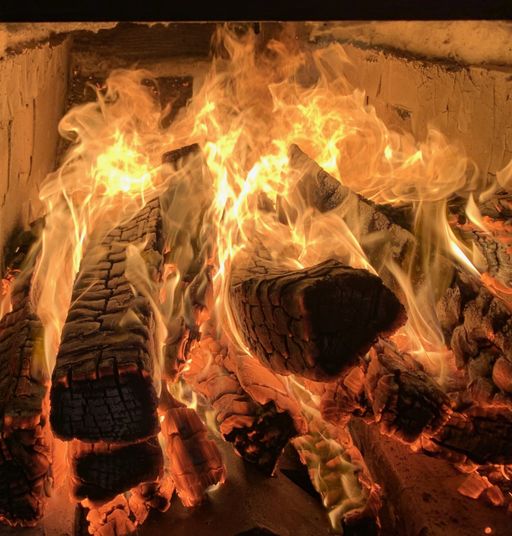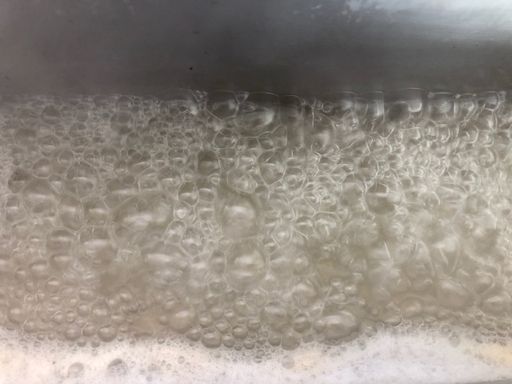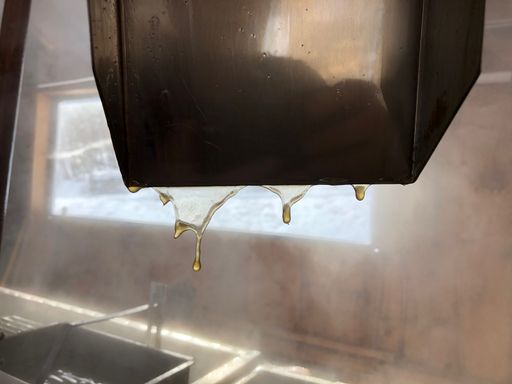Boiling sap over a wood fire is not the easiest way to make maple syrup, but we believe it is the right way because it is carbon neutral.
Industrial producers of maple syrup use oil fired evaporators. At the start of a shift, is easy to turn on an oil burner and start boiling almost immediately, then shut off the fuel knob at the end of the shift. That convenience has costs. One of the greatest threats to maple syrup is climate change because sap flows only during the weeks of freeze-thaw cycle. The warmer the climate, the shorter the season. Convenience also causes producers to lose touch with what is important.
A wood fire is traditional, harkening back to the first maple syrup made. More than just tradition, wood has value because we spend time in our sugarbush, culling windfalls and diseased trees, maintaining trails, and observing the health and beauty of our land throughout the year.
In the sugarhouse, we make maple syrup with all our senses. We can hear the firewood crackle and pop as we put it in the firebox, roar as it catches fire, then quiet down signaling it is hungry for more. In the back pan of the evaporator, large bubbles roll and rumble and in the front pan they hiss. We can smell the sap turn into syrup, watch the size and color of the bubbles to tell the grade, and signal if anything is amiss.
There is a rhythm to boiling over a wood fire. We have to stay close and pay attention to the details. Being tuned in helps us make exceptionally good maple syrup every step of the way.


